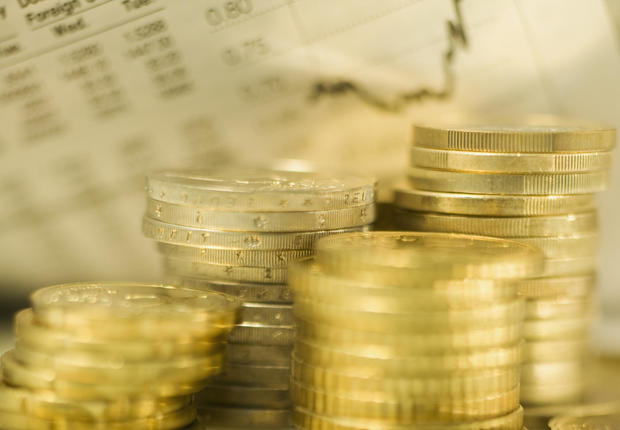Gold has always been popular but 2023 has been a largely banner year for the precious metal. Persistent inflation and elevated interest rates have many looking for safe places to put their investing dollars, leading many to turn to gold. Gold is a great investment in times of economic trouble, thanks to its steady value, reliable returns and high liquidity.
But it’s not just helpful when the news is grim. It’s a smart addition to your portfolio at any time. Explore your gold investing options by requesting a free information kit today.
Why gold is a smart investment in any economy
Whether the economy is up or down, gold is worth considering. Here are three reasons why.
It’s a hedge against inflation
Gold can protect your money in times of inflation. As interest rates rise, gold prices often rise with them.
For example, in the beginning of the 1970s, the federal funds rate averaged 8.98%, according to the Federal Reserve Bank of St. Louis. By January 1980, it was up to 13.82%. During that period, gold prices rose from $35 per share to a whopping $850 per share, according to NASDAQ data.
Other investments, such as stocks, don’t often fare as well during inflationary period. For example, between October 2007, and March 2009, the S&P 500 index fell by 56.8%, according to data from GoldSilver. Meanwhile, gold went up by 25.5% in the same time.
During times of economic uncertainty and persistent inflation, diversification is key to safeguarding your portfolio from significant losses. While more volatile assets like stocks have the potential for high returns, gold can provide a counterbalance when they stumble. Experts recommend keeping 5% to 10% of your portfolio in gold for this reason.
Its value can rise in a recession
Gold can be a safe haven for your money in a recession. Gold prices have historically increased the weaker the economy becomes.
Consider the release of the Fed’s March minutes as an example. After the news that the Fed expected a “mild recession,” the S&P, Dow and Nasdaq composite all fell. Meanwhile, the spot price of gold went up to $2,042.49 per ounce, according to Reuters — nearly as high as the record in 2020. Gold futures went up to $2,056.90.
And that’s for a “mild recession” warning. If we find ourselves in a severe recession, gold values could go even higher. By buying gold ahead of a recession, you can capitalize on these potential gains while other assets falter.
Explore your gold investing options here to get started.
It can be strong when the dollar is weak
How much the dollar is worth is at the mercy of many factors, including interest rates, the political climate and how much money the government prints. You may earn the same amount of money, but it may not go as far, and that can put you in a bind.
When your purchasing power is down, you may find yourself in need of a quick injection of cash. Credit cards and personal loans come with high interest rates, potentially locking you into debt payments that hamper your finances for years to come.
Since gold is highly liquid, you can sell it quickly to generate some extra funds. Plus, since it tends to be worth more when the economy is weak, you could get more from your investment just when you need it most.
The bottom line
Ups and downs are an inevitable part of our economy. One way to avoid losses and get the most out of your money is by investing in gold. Of course, as with any investment, you should understand gold’s pros and cons to determine if it’s right for you. If you’re considering investing in gold, you can get started by requesting a free information kit here.

